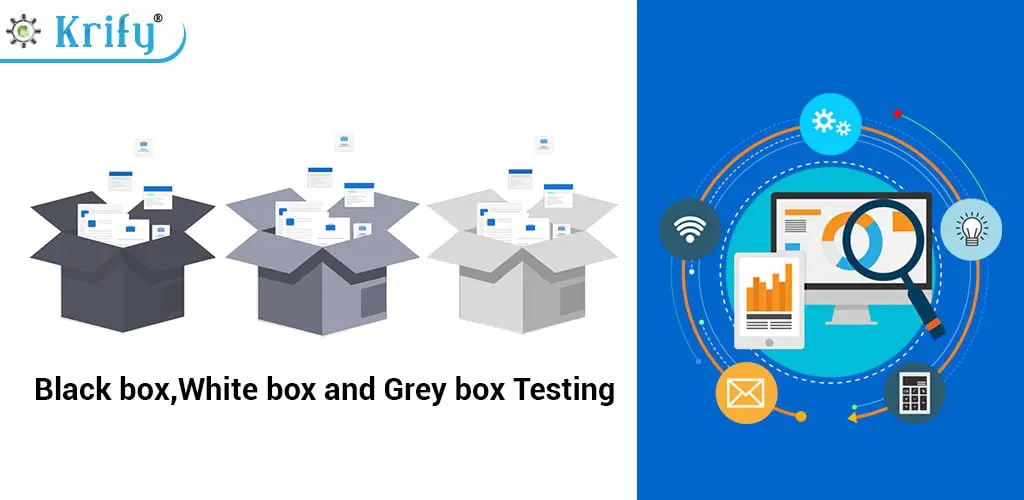Developing an application or software is a robust process where the developer needs to concentrate on each line of code to ensure a flawless result. Knowledge on differences between various types of box testing methods, which includes black box, grey box, and white box testing, are performed to ensure safety and security.
Testing is crucial for any application, as it improves performance, quality, and vulnerability management. There are various types of testing performed on applications developed, But here we will discuss a few methods of testing namely Black box testing, White Box Testing, and Grey Box Testing.
So let us understand in brief about the Black box, White box, and Grey box testing.
1. Black Box Testing
Black box testing, also known as Behavioral testing, focuses solely on application functionalities. Also, the tester is unaware of the structure, design, and implementation of the application. So they mainly focus on functionalities such as interface, completion, program initialization, and exit errors.
Benefits of this Black Box Testing:
- Accessibility: This testing is straightforward as the tester focuses solely on inputs and outputs, without requiring deep technical knowledge.
- Faster: This type of testing requires minimal knowledge of the system, leading to shorter testing durations.
- Impartiality: Testing is conducted from the user’s perspective, ensuring impartial results rather than from the developer’s viewpoint.
Cons of Black Box Testing
- Lack of Knowledge: Since the testers are not given access to look into the source code, it would be difficult to identify the root cause of the problem. Some of the issues like cryptography, the quality of the application are really hard to spot.
- Redundant: If faults in the application are discovered through other tests, their significance diminishes as they are likely to be covered in those tests.
2. White Box Testing:
White box testing is the next level of testing when compared with black-box testing. The tester needs to completely check the functioning, source code, and internal code of the application. Unlike the black box testing, the tester is countable for data flow, understanding the source code, and dealing with errors.
Benefits of White-box testing:
- Prediction: By performing this test during application development, the tester can spot obstructing points that might turn into issues or errors in the future.
- Optimization: Since the tester has access to code, they can optimize the code which could result in better performance.
Cons of White Box Testing
- Complexities: This type of testing demands strong programming knowledge.
- Duration: Testing takes longer than usual time depending on the length of the source code.
- Automation: Performing a white box test involves utilizing tools like Google Test, CPP Unit, and code analyzers, which may occasionally have a negative impact on the application’s performance.
- Scalability: Measuring the project proves challenging due to its extensive source code, complicating the determination of testing priorities and what to overlook.
- Intrusion: Given access to the source code, testers face risks, as the code may fall into unauthorized hands outside the organization. Hence, professional testers are essential.
3. Grey Box Testing
Grey box testing combines Black box and white box testing, enabling testers to assess both internal functionalities and external functioning of an application. However, testers do not access the source code; instead, they follow the “Black Box” testing method. As grey box testing is a blend of the Black box and White box testing, it has pros and cons which can be as follows:
Benefits of Grey Box Testing
- Testing is conducted from the user’s perspective.
- Programming expertise is not a prerequisite for testers.
- It is non-intrusive
- The application’s quality is enhanced.
Cons of Grey Box Testing
Without access to the source code, testers find it challenging to detect internal issues within the application.
Conclusion:
Testing is crucial after app development, but analyzing the results is equally vital to enhance app quality and performance. Krify excels in mobile and web application development , conducting Quality testing and updating clients on outcomes.



